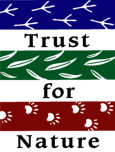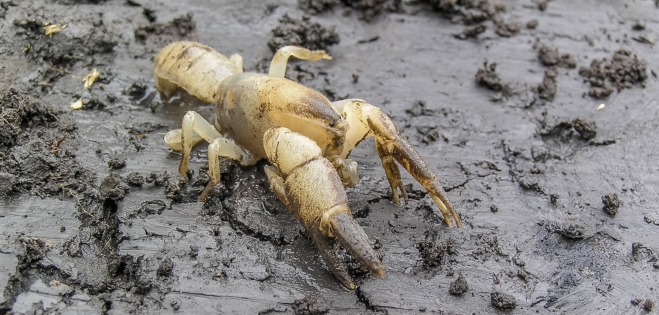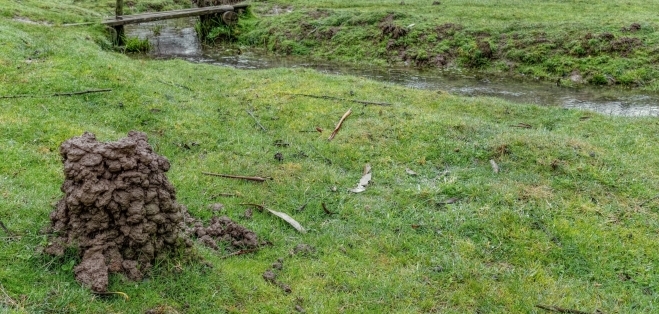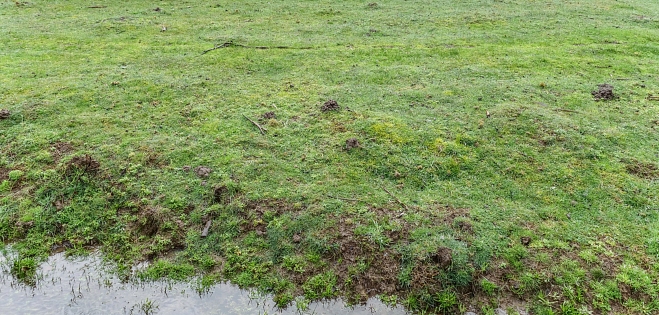Web Site by VP-IT
Threatened Burrowing Crayfish of
West Gippsland
BurrowingCrayfish.com.au

PROJECT NEWS
FACTS
FACT SHEETS:
Warragul Burrowing Crayfish
- Recognising & Protecting
Crayfish Habitat
Narracan Burrowing Crayfish
- Recognising & Protecting
Crayfish Habitat
Strzelecki Burrowing Crayfish
- Recognising & Protecting
Crayfish Habitat
CRAYFISH COUNTRY
Australia is home to 142 species of crayfish. South Eastern Australia could rightly be called “Crayfish Country” as it is recognised by biologists as being the centre for freshwater crayfish diversity (Family Parastacidae). Nine of ten living genera reside within this region. Five groups of freshwater crayfish are native to Victoria: Engaeus (Burrowing crayfish) Gramastacus (Swamp crayfish) Euastacus (Spiny crayfish) Geocharax (Land crayfish) Cherax (Smooth yabbies)







While the Giant Gippsland Earthworm is arguably one of Gippsland’s most famous threatened species, there is
another mysterious critter lurking underground. It is rarely seen, never heard, but leaves signs of activity while
you are sleeping. It belongs to a group of specialised crayfish known as burrowing crayfish.
The Warragul Burrowing Crayfish, Engaeus sternalis is thought to be one of the rarest species of burrowing
crays in Australia. It is only found in a small area of approximately 20 square kilometres in West Gippsland.
YABBY DABBY DOO - A yabby or a crayfish?
When people first hear the words ‘freshwater crayfish’, they usually associate them with the word ‘Yabby’ and something tasty on the plate from the farm dam. These sought-after freshwater yabbies belong to the genus Cherax. Cherax destructor is the most common yabby found in dams, streams and rivers throughout much of Australia. However, while relatives of the yabby, burrowing crayfish belong to the genus Engaeus. These crayfish are considered terrestrial crayfish, living most of their lives on the land in a labyrinth of underground burrows. They make their presence known by their architectural prowess, building soil chimneys that stand like earthen totem poles surrounding the entrance to their burrows. This group make up a large proportion of Australia’s threatened crayfish fauna (see text box).Fifty Shades Of Cray
West Gippsland is a “Hot Spot” for burrowing crayfish and is home to nine different species, five of which are restricted (endemic) to the region and considered in need of conservation actions to help stop their decline. Three of these have special protection in Victoria and are listed under Victoria’s Flora and Fauna Guarantee Act 1998.JOIN THE HUNT
Join us on a hunt for information about fascinating threatened burrowing crayfish. Learn how to identify them and help protect their habitat so we can continue to see their earthen totem poles standing tall across the landscape.
All photographs © Dr. Beverley Van Praagh, Invert-Eco unless otherwise stated. No image may be saved, copied, reproduced or distributed without prior permission from the copyright owner.
Site content written by Dr. Beverley Van Praagh (BSc. PhD.)


VIDEO:
Threatened Invertebrates of the
Western Strzeleckis - Protecting
the Narracan and Strzelecki
Burrowing Crayfish on Farms
- Vimeo
CASE STUDIES:
Crayfish And Poo Ponds
- An Unexpected Alliance
Looking After Your Neighbours
(worms and crayfish) Case Study
Training Days in Crayfish Ways



Victorian Government’s Biodiversity Response Planning Project (BRP)
In 2018, a partnership project between DELWP Gippsland, Federation University, Gippsland Water, Latrobe Catchment Landcare Network, and South Gippsland Landcare Network was awarded a Grant under the State Government’s Biodiversity Response Planning Project (BRP) to promote the conservation of four species of threatened invertebrates found in the western end of the Strzelecki Ranges. It builds on an earlier Federal Government project “Building Capability To Manage GGE Habitat On Farms”. The project has two aims: • investigate the potential of eDNA to assist in identifying different species of burrowing crayfish in the field; and • work with landowners to ensure that habitats of Giant Gippsland Earthworm and burrowing crayfish are protected on rural properties. This involves undertaking appropriate revegetation and providing support for on-ground works such as deer control and fencing where required.





















